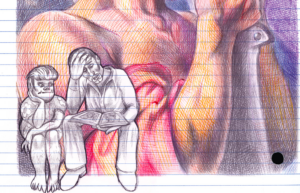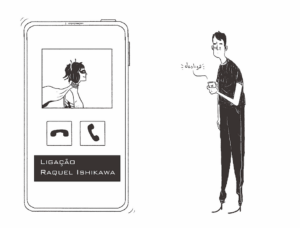AI is the result of applying cognitive science techniques to artificially create something that performs tasks that only humans can perform, like reasoning, natural communication, and problem-solving. Healthcare chatbots use AI to help patients manage their health and wellness. These chatbots can provide personalized recommendations, track fitness goals, and provide educational content. Additionally, healthcare chatbots can be used to schedule appointments and check-ups with doctors. Most would assume that survivors of cancer would be more inclined to practice health protection behaviors with extra guidance from health professionals; however, the results have been surprising.
- These categories are not exclusive, as chatbots may possess multiple characteristics, making the process more variable.
- The rationality in the case of models and algorithms is instrumental, and one can say that an algorithm is ‘the conceptual embodiment of instrumental rationality within’ (Goffey 2008, p. 19) machines.
- When patients walk through healthcare sites, they are usually in search of quick responses.
- Adding chatbot assistants reduces overhead costs, uses support staff time better and enables organizations to provide customer service during hours when live agents aren’t available.
- Safedrugbot functions as a chatbot for doctors, running doctor’s queries against an extensive drug database.
- At this level of maturity, the chatbot cannot generate answers if John continues with further questions.
After training your chatbot on this data, you may choose to create and run a nlu server on Rasa. The first step is to set up the virtual environment for your chatbot; and for this, you need to install a python module. Once this has been done, you can proceed with creating the structure for the chatbot. These platforms have different elements that developers can use for creating the best chatbot UIs. Almost all of these platforms have vibrant visuals that provide information in the form of texts, buttons, and imagery to make navigation and interaction effortless.
Healthcare Virtual Assistants: Use Cases, Examples & Benefits
Expertise generally requires the intersubjective circulation of knowledge, that is, a pool of dynamic knowledge and intersubjective criticism of data, knowledge and processes (e.g. Prior 2003; Collins and Evans 2007). Therefore, AI technologies (e.g. chatbots) should not be evaluated on the same level as human beings. AI technologies can perform some narrow tasks or functions better than humans, and their calculation power is faster and memory more reliable. When physicians observe a patient presenting with specific signs and symptoms, they assess the subjective probability of the diagnosis.
- This paradigm is steering at lightning speed with union of cognitive and virtual technologies.
- This is where they need a system that can bridge the communication gap and support them during recovery.
- For example, improved CX and more satisfied customers due to chatbots increase the likelihood that an organization will profit from loyal customers.
- When they find the right services, they can not engage because of long waiting times & inconvenient calling hours.
- Following Pasquale , we can divide the use of algorithmic systems, such as chatbots, into two strands.
- Doctors play a crucial role in society, and they strive to provide constant availability and give each patient the time and attention they need.
In addition, these bots can help provide timely access to pertinent healthcare information to the appropriate parties. Medical or healthcare chatbots can be utilized for various goals, from bettering patient experiences Conversational AI in to simplify interaction with the patients and assisting medical personnel in optimizing healthcare processes and revealing valuable insights. Medical chatbots are one of the most advanced and influential AI-powered healthcare solutions created thus far.
uses of Medical Chatbots and AI based health assistants
Added life expectancy poses new challenges for both patients and the health care team. For example, many patients now require extended at-home support and monitoring, whereas health care workers deal with an increased workload. Although clinicians’ knowledge base in the use of scientific evidence to guide decision-making has expanded, there are still many other facets to the quality of care that has yet to catch up.
As chatbots remove diagnostic opportunities from the physician’s field of work, training in diagnosis and patient communication may deteriorate in quality. Chatbots are well equipped to help patients get their healthcare insurance claims approved speedily and without hassle since they have been with the patient throughout the illness. Not only can they recommend the most useful insurance policies for the patient’s medical condition, but they can save time and money by streamlining the process of claiming insurance and simplifying the payment process. Chatbots called virtual assistants or virtual humans can handle the initial contact with patients, asking and answering the routine questions that inevitably come up.
Why chatbots?
You are on the phone for what seems like an eternity, your call being transferred among various departments and personnel, being put on hold before finally getting that appointment confirmed. Despite all these efforts, the World Health Organization projects that the healthcare sector will still face a shortfall of 9.9 million healthcare professionals by 2030. Weizenbaum J. ELIZA—A computer program for the study of natural language communication between man and machine. It seems that trust in chatbots—when they function as they should—has positive effects on trust in HCPs. Clauser SB, Wagner EH, Aiello Bowles EJ, Tuzzio L, Greene SM. Improving modern cancer care through information technology.
How do you make a chatbot for healthcare?
As a rule, the development of virtual assistants is carried out in 7 steps: Creating a dialog path or conversation flowchart. Choosing the best user interface. Defining the tech stack. Setting up a virtual environment and creating a structure. Training the script behavior and testing. Adding HIPAA compliance. Technical support and warranties. Ask for help from Glorium Tech experts who will create a chatbot for your clinic, pharmacy, or medical facility within the required time frame.
66% of patients are willing to take on technology & mHealth into their treatment plan. Based on the research of Frost & Sullivan, Integrating conversational AI agents in hospitals will decrease the cost of treatment by 50% and increase outcomes by 30–40%. Traditionally every individual is spending more than 9000 hours in taking care of their health outside the hospital. The reason is, it motivates the organization to provide better care for each patient and make him satisfied with the service they are offering. As hospitals face consolidation and CIOs are asked to increase staff productivity, tech companies that can support automation with solutions that are easy to onboard are getting heightened interest. An efficient supply chain starts with proactive preparation and the right technology.
Top Ten Trends in Enterprise Use of Chatbots and Virtual Assistants
In addition, image recognition is being used to process images, handwritten scripts, and QR barcodes. These features can give quite a well-rounded picture to the virtual assistant, enabling it to perform more accurately. The experts state that 3 out of 5 doctor visits would be irrelevant if the common questions of patients are addressed via chatbots. The clinic visits are also estimated to reduce by a whopping 60% as the chatbots handle patient queries. The patient is thus happy with the support and feels relieved after receiving a quick response.





